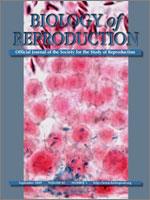The Leydig cell-specific factor insulin-like peptide 3 (INSL3) is involved in testicular descent during embryo development, and has been suggested to regulate spermatogenesis and bone metabolism in the adult. Using a new, sensitive assay specific for rodent INSL3, we have mapped the secretion of INSL3 into peripheral blood in mice and during postnatal male rat development (in female rats, circulating INSL3 is at the level of detection). Maximum INSL3 is measured at Postnatal Day (PD) 40 in the rat and decreases to a significantly lower, stable value by PD60, indicating an “overshoot” effect in the establishment of Leydig cell functionality during the first wave of spermatogenesis. Aging rats (∼24 mo) have markedly reduced circulating INSL3 levels, as do humans. Treatment of young adult rats with ethane dimethylsulfonate (EDS) leads to loss of mature Leydig cells and no detectable INSL3 in peripheral blood. INSL3 can be detected first at Day 27 after EDS treatment, returning to near normal levels by Day 37. Both primary rat Leydig cells and the mouse MA-10 tumor cell line secrete substantial amounts of INSL3 into the culture media in a constitutive manner, unregulated by common effectors, including hCG. Analysis of different testicular fluid compartments shows highest INSL3 concentration in the interstitial fluid (391.4 ± 47.8 ng/ml). However, INSL3 evidently traverses the blood-testis barrier to enter the seminiferous compartment, rete testis, and epididymis in sufficient concentration to be able to address the specific INSL3 receptors (RXFP2) on post-meiotic germ cells and in the epididymis.
How to translate text using browser tools
6 May 2009
Dynamics of INSL3 Peptide Expression in the Rodent Testis
Ravinder Anand-Ivell,
Kee Heng,
Bettina Hafen,
Brian Setchell,
Richard Ivell
ACCESS THE FULL ARTICLE

Biology of Reproduction
Vol. 81 • No. 3
September 2009
Vol. 81 • No. 3
September 2009
blood-testis barrier
insulin-like peptide 3
Leydig cells
spermatogenesis
testis development




